Our hostel was immediately next to independence square. We were stuck in a completely packed 10 bed dorm room, apparently because every room in town was occupied for a major dance competition taking place about a hundred feet away from us.
Our first night we grabbed some sandwiches and headed toward the Dnieper River to have a picnic dinner. We were surprised to find ourselves with lots of company, as we ended up in a former soviet outdoor theater that had been converted into a small amusement park. We watched teenagers climb on the tops of heads of imposing soviet statues while Matrix-themed thrill rides spun in the background.
One of my stranger life long goals has been to explore Chernobyl, so when we found out that our hostel could connect us with a guide who could bring us into the exclusion zone signed up immediately.
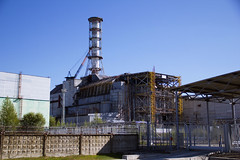
We were loaded into a van where we ended up seated next to two Japanese guys. We were pretty tired so we let them chat for about an hour before they began contemplate where we were from and we chimed in with a Japanese response. One of them was from the area near the Fukushima plant, so he was especially interested in seeing how the government reacted to the disaster.
We watched a video explaining the basics of the disaster. It was the first time I had heard the phrase "bio-robot." Apparently actual robots weren't getting the job of shoveling highly radioactive rubble off the roof of the plant done quickly enough, so the government had soldiers sew together their own lead bibs and run onto the roof for twenty second shifts.
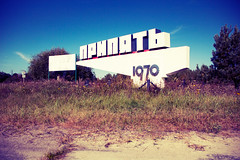
Finally arriving at the exclusion zone, you have to pass through a security check before attending a meeting where you sign off on your life in a waver and get told not to touch or sit on anything. Then we were brought into Pripyat, the worker's town. Two days after the disaster, 53,000 people were told they needed to evacuate for three days, but then they were never allowed to return.
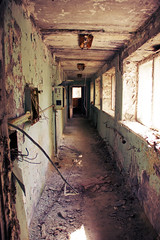
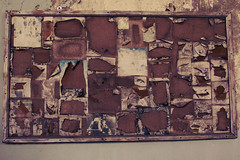
The preferred method of evacuation was to break windows and throw out your belongings. You more often find yourself stepping on broken glass or books than actual floor. Nature has made its way back into the buildings.
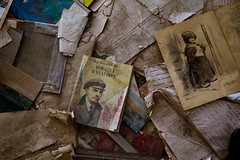
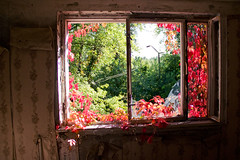
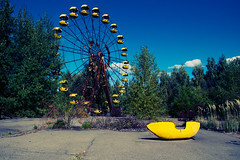
The amusement park was scheduled to open a few days after the evacuation.
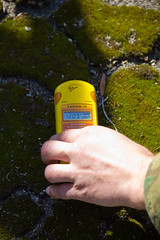
This moss is registering at 12 micro sieverts - the equivalent of about two and a half dental x-rays.
I was pleasantly surprised by how much freedom we were given to explore the town. At the school, we were simply told to "come back in twenty minutes." I got so wrapped up in taking pictures that I got completely lost and had to run through the hallways trying to find an exit.

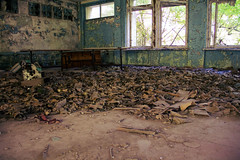
On the way out, we had to pass through a machine that allegedly told us if we were covered in radiation or not. I'm not entirely convinced the machine did anything more than flash a green light every time a person stood on it. To this day the government only acknowledges the deaths of the 31 workers who died immediately, but Greenpeace estimates that 200,000 or more people have probably died early from cancer as a result of the disaster.
We had two more days in Kiev due to a lack of space on trains. We went to some churches and markets, but I came down with a slight cold and was too tired to do a whole lot. I used it as an excuse to spend some time going through all my Chernobyl photos!

No comments:
Post a Comment